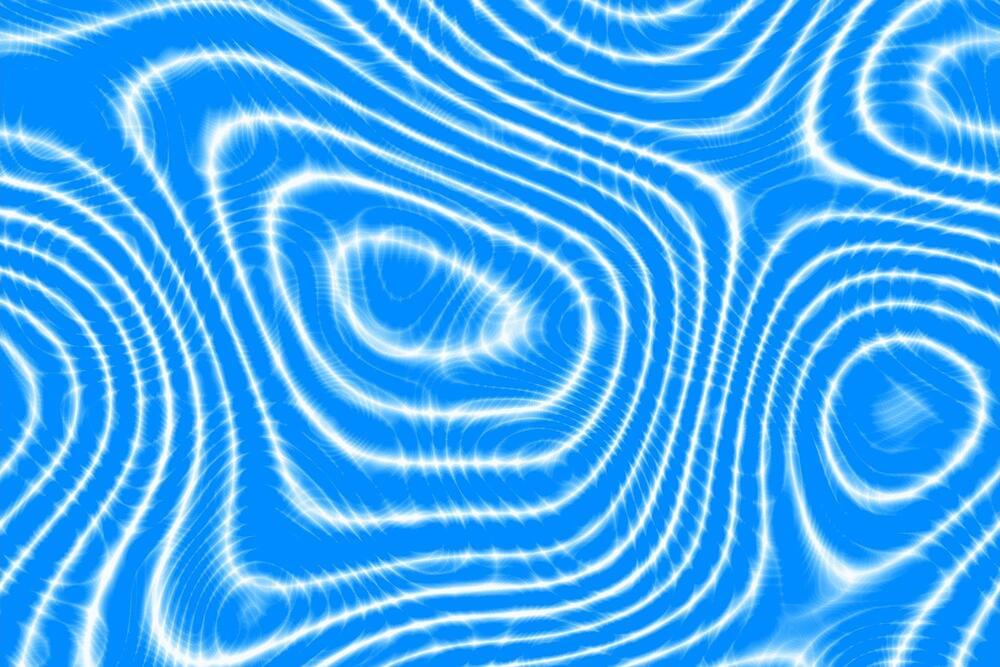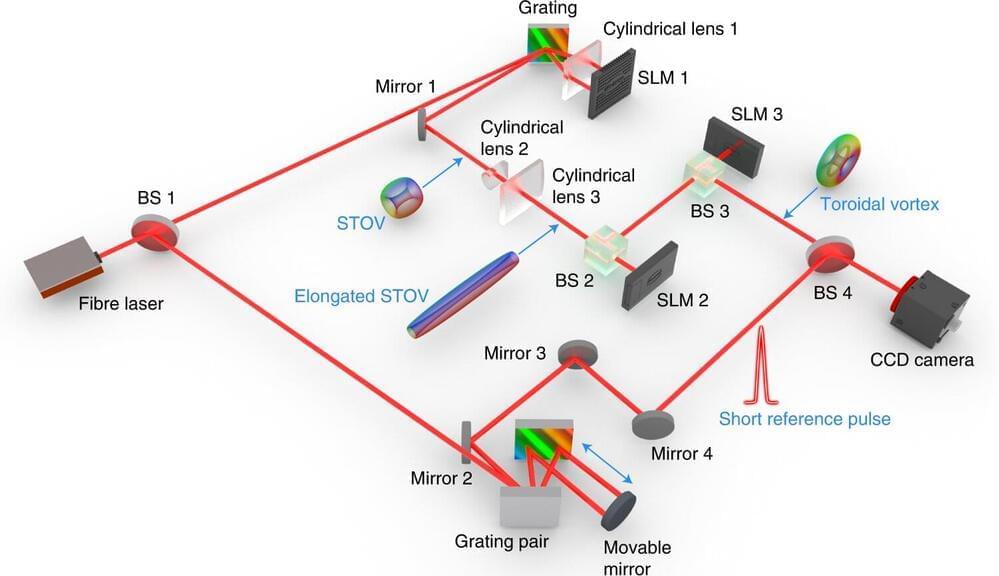Alan Turing first proposed a test for machine intelligence in 1950, but now researchers at Google and their partners have created a suite of 204 tests to replace it, covering subjects such as mathematics, linguistics and chess.



Circa 2019
According to string theory, all particles and fundamental forces arise from the vibrational states of tiny strings. For mathematical consistency, these strings vibrate in 10-dimensional spacetime. And for consistency with our familiar everyday experience of the universe, with three spatial dimensions and the dimension of time, the additional six dimensions are “compactified” so as to be undetectable.
Different compactifications lead to different solutions. In string theory, a “solution” implies a vacuum of spacetime that is governed by Einstein’s theory of gravity coupled to a quantum field theory. Each solution describes a unique universe, with its own set of particles, fundamental forces and other such defining properties.
Some string theorists have focused their efforts on trying to find ways to connect string theory to properties of our known, observable universe—particularly the standard model of particle physics, which describes all known particles and all their mutual forces except gravity.

Marianne StebbinsWhat does this solve that isn’t already handled by air and water?
5 Replies.
Anne KristoffersenTurn the Bering Strait Crossing into a bridge arcology and the project will handsomely pay for itself in a sustainable way.
The Diomede Bridge ArcoCity could become a vastly important city-state, essentially having a millions-strong settlement there w… See more.
7 Replies.
View 34 more comments.
Jose Ruben Rodriguez Fuentes shared a link.
It’s said that the clock is always ticking, but there’s a chance that it isn’t. The theory of “presentism” states that the current moment is the only thing that’s real, while “eternalism” is the belief that all existence in time is equally real. Find out if the future is really out there and predictable—just don’t tell us who wins the big game next year.
This video is episode two from the series “Mysteries of Modern Physics: Time”, Presented by Sean Carroll.
Learn more about the physics of time at https://www.wondrium.com/YouTube.
00:00 Science and Philosophy Combine When Studying Time.
2:30 Experiments Prove Continuity of Time.
6:47 Time Is Somewhat Predictable.
8:10 Why We Think of Time Differently.
8:49 Our Perception of Time Leads to Spacetime.
11:54 We Dissect Presentism vs Eternalism.
15:43 Memories and Items From the Past Make it More Real.
17:47 Galileo Discovers Pendulum Speeds Are Identical.
25:00 Thought Experiment: “What if Time Stopped?”
29:07 Time Connects Us With the Outside World.
Welcome to Wondrium on YouTube.
Here, you can enjoy a carefully curated selection of the history, science, and math videos you’ve come to know and love from brands like The Great Courses, and more.
If you’ve ever wanted to travel back in time, wondered about the science of life, wished for a better understanding of math, or dreamt of exploring the stars … then Wondrium will be your new favorite channel on YouTube!

A new molecule synthesized by a University of Texas at Dallas researcher kills a broad spectrum of hard-to-treat cancers, including triple-negative breast cancer, by exploiting a weakness in cells not previously targeted by other drugs.
A study describing the research — which was carried out in isolated cells, in human cancer tissue and in human cancers grown in mice — was published online June 2 in the journal Nature Cancer.
Dr. Jung-Mo Ahn, a co-corresponding author of the study and a UT Dallas associate professor of chemistry and biochemistry in the School of Natural Sciences and Mathematics, has been passionate about his work designing small molecules that target protein-protein interactions in cells for over a decade. Using an approach called structure-based rational drug design, he previously developed potential therapeutic candidate compounds for treatment-resistant breast cancer and for prostate cancer.

University of Queensland scientists have cracked a problem that’s frustrated chemists and physicists for years, potentially leading to a new age of powerful, efficient, and environmentally friendly technologies.
Using quantum mechanics, Professor Ben Powell from UQ’s School of Mathematics and Physics has discovered a “recipe” which allows molecular switches to work at room temperature.
“Switches are materials that can shift between two or more states, such as on and off or 0 and 1, and are the basis of all digital technologies,” Professor Powell said. “This discovery paves the way for smaller and more powerful and energy efficient technologies. You can expect batteries will last longer and computers to run faster.”


Machine learning can get a boost from quantum physics.
On certain types of machine learning tasks, quantum computers have an exponential advantage over standard computation, scientists report in the June 10 Science. The researchers proved that, according to quantum math, the advantage applies when using machine learning to understand quantum systems. And the team showed that the advantage holds up in real-world tests.
“People are very excited about the potential of using quantum technology to improve our learning ability,” says theoretical physicist and computer scientist Hsin-Yuan Huang of Caltech. But it wasn’t entirely clear if machine learning could benefit from quantum physics in practice.

A team of researchers from the University of Shanghai for Science and Technology and the University of Dayton has developed a way to bend light into a vortex ring using mirrors, lasers and lenses. In their study, published in the journal Nature Photonics, the group built on work done by other teams in which vortex rings were observed incidentally, and then mathematically designed a system that could generate them on demand.
In 2016, another team of researchers discovered that under the right circumstances, strong pulses of light swirling around a central pipe-shaped pulse, could sometimes form into a donut-shaped vortex. Intrigued by the finding, the researchers with this new effort began to wonder if it might be possible to create such vortex rings on demand.
They started by studying the properties and conditions that had led to the formations observed by the team in 2016 and applied mathematics to the problem. They found solutions that appeared to show how such rings could be made—solutions to Maxwell’s equations, in particular, they found, could be used to generate the kind of conformal mapping required.
AI For Defense Nuclear Nonproliferation — Angela Sheffield, Senior Program Manager, National Nuclear Security Administration, U.S. Department of Energy.
Angela Sheffield is a graduate student and Space Industry fellow at the National Defense University’s Eisenhower School. She is on detail from the National Nuclear Security Administration (NNSA), where she serves as the Senior Program Manager for AI for Defense Nuclear Nonproliferation Research and Development.
The National Nuclear Security Administration (https://www.energy.gov/nnsa/national-nuclear-security-administration), a United States federal agency, part of the U.S. Dept of Energy and it’s Office of Defense Nuclear Non-Proliferation, responsible for safeguarding national security through the military application of nuclear science.
NNSA maintains and enhances the safety, security, and effectiveness of the U.S. nuclear weapons stockpile; works to reduce the global danger from weapons of mass destruction; provides the United States Navy with safe and effective nuclear propulsion; and responds to nuclear and radiological emergencies in the United States and abroad.
In this position, Ms. Sheffield directs efforts leveraging artificial intelligence, advanced mathematics and statistics, and research computing technologies to develop capabilities to detect nuclear weapons development and characterize foreign nuclear programs around the world.